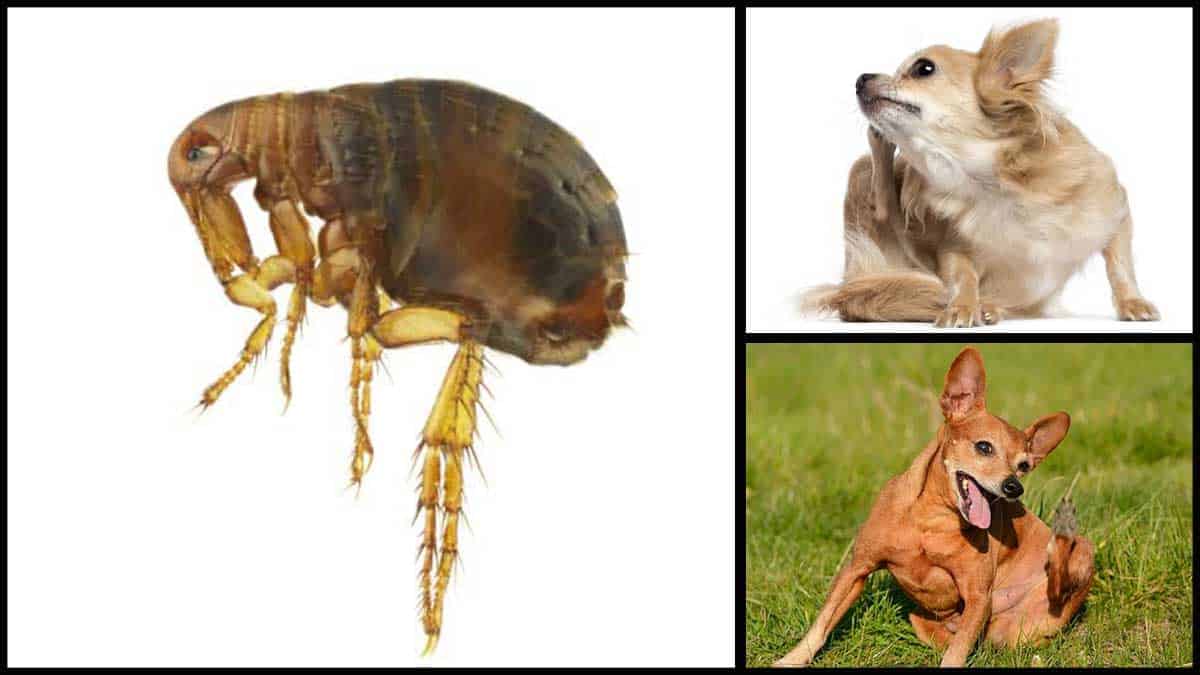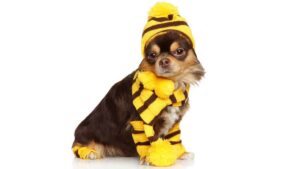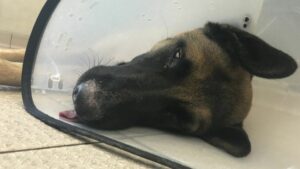Battle of the Bugs! Preventing and Controlling Fleas on Your Chihuahua. This is your ultimate guide on how to get rid of fleas, the quick way.
Fleas in Chihuahuas
They’re the nemesis of dog owners everywhere, and even our pint-sized pups aren’t immune to becoming hosts to these persistent pests. Some dog owners, however, may have little idea about how to effectively prevent or treat fleas, so let’s take a better look at these tiny parasites in order to find out how you can prevent them from becoming permanent house guests.
Fleas are small, blackish-brown insects that live on mammals, making our canine companions perfect hosts. Being wingless, they can’t fly but jump or crawl onto their hosts, using their mouthparts to bite and feed on blood from tiny vessels in your dog’s skin. Your diminutive doggie friend may scratch and chew at themselves, and you may see a brownish-black, peppery substance in their fur, particularly at the base of their tailor around their neck and shoulder area.
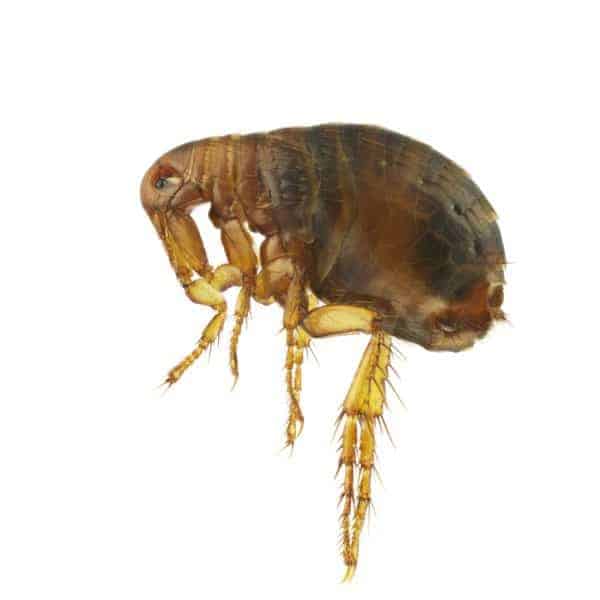
Why Are Flea Bites Scratchy?
Why do dogs with fleas scratch? Many dogs are itchy after a flea bite because the flea injects a small amount of saliva into the skin to prevent the blood from coagulating as it feeds, causing a local skin reaction at the site of the bite.
Suppose your Chi is one that’s unlucky enough to have a more extreme reaction to flea bites. In that case, they may develop bumpy, scabby skin or might become so itchy that they scratch and chew at themselves constantly, causing hair loss, redness, and infection; a condition called flea allergy dermatitis. Fleas can also transmit tapeworms to your pup, upping the parasite ‘ick’ factor. A large flea infestation can be hazardous for toy breeds or young puppies since they can potentially become anemic.
Looking at the Flea Life Cycle
To become really effective at keeping fleas at bay, it’s important for dog owners to understand how the flea life cycle works. There are four stages of flea development: eggs, larvae, pupae, and adult fleas.
- Eggs: Your pooch is the place where an adult flea feeds and breeds. An adult flea may also lay eggs on your pup, or they may jump off and deposit their eggs around your home (like your carpets, bedding, and even backyard). A female flea usually lays several hundred eggs during her lifetime – yikes!
- Larvae: Eggs hatch into larvae, which reside around your home as well, and feed off of adult flea excrement (dried, digested blood) and dander.
- Pupae: Next, the larvae develop a protective and resistant outer casing while they develop into the final stage…
- Adult fleas: As soon as they hatch from their shell (an event that’s usually triggered by the presence of vibrations or increased C02 levels nearby) adult fleas are highly motivated to find the nearest food source – which is usually your canine companion – repeating the cycle all over again.
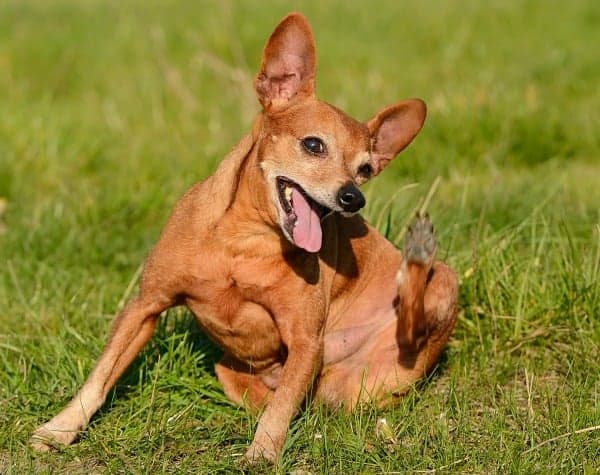
The average flea life cycle, from egg to adult, is around three weeks, though it can be faster in warm, humid conditions. Without stimulation to hatch, pupae can actually stay dormant in your home for months! Because fleas reproduce so quickly, the presence of even one flea on your pup can mean that there’s hundreds more in various life stages around your house, invisible to your eyes.
How to Get Rid of Fleas
The number of flea control products on the market today can definitely be overwhelming, but the good news is that many of these are both safer and more effective at preventing and treating fleas than the more toxic dips, shampoos and sprays that were used as recently as 15-20 years ago.
Because our pint-sized pups can often be more sensitive to the chemicals in some flea products, and overdosing can be dangerously easy for dogs with such a small physique, it’s a good idea to ask your veterinarian about which flea control products and dosage amounts are safe to use for your Chihuahua.
Keep in mind that, while shampoos and powders may kill adult fleas on your pet, their effect typically won’t last more than a day or two beyond that treatment, and they have no effect on the fleas around your house. Long-lasting products that kill fleas on contact before they have a chance to breed are your best bet for stopping fleas in their tracks, especially when combined with a household treatment that kills eggs and larvae.
Products for Flea Eradication
Products like Bravecto, Advantage, Frontline, Revolution, Capstar, Vectra, and Comfortis are medications that have been tested rigorously for safety, and most veterinarians strongly recommend the use of these instead of flea collars, shampoos, or over-the-counter topical treatments like Hartz drops.
You’re not alone if you prefer a more natural solution to repel these persistent little pests. Many dog owners also prefer to use more holistic methods for controlling fleas, and there are some Chihuahua-safe options out there.
To help reduce the adult flea population in a household, we suggest daily combing to remove fleas and flea dirt, using a lemon rinse or pet-safe citronella spray on their skin and coat, and bathing weekly in dish detergent. But, results can vary from dog to dog. Though, it will depend on the environmental conditions and size of a particular flea infestation. You can apply diatomaceous earth (food grade) to outdoor areas to kill fleas. At the same time, many natural-minded dog lovers have found that using Borax (100% boric acid) to carpeting is helpful for flea control as well.
More Ways How to Get Rid of Fleas
Other things that help to prevent and control fleas:
- Vacuum daily – The vibration made by the vacuum causes the flea pupae to hatch, allowing you to suck them up and dispose of them right away before they can ‘bug’ you…or your Chi!
- Wash your pup’s bedding, blankets, toys, and area rugs weekly in warm water with a vinegar rinse
- Make sure all pets in the house are checked and treated for fleas – this includes pocket pets, too!
- Make sure you keep your yard mowed. Chis love tall grass.
Fleas can definitely be one of the more frustrating parasites to deal with. Still, with persistence and a commitment to a regular, safe flea control routine for your pup, you can help to ensure that your Chihuahua is free to be ‘itch-free’.
One of our members mentioned this: “My female chihuahua is 2 lbs very tiny. One of my male chihuahuas is almost 5 and has never had fleas. I had a old Vet tell me to use Coconut Suave shampoo and then rub coconut oil through their fur, he said that’s why African Americans don’t get lice because of the oil they put in their hair. I’ve done this since he was a baby and no fleas. I’ve got 4 chihuahuas and don’t have unwanted pests lol hopefully this might work for your furbaby.”
So that’s an option to try if you don’t want to use chemical products on your pup.
Source: ilovemychi

